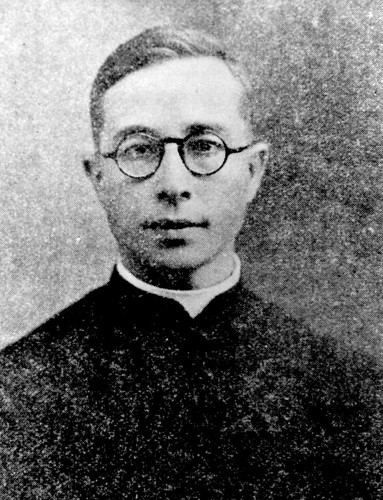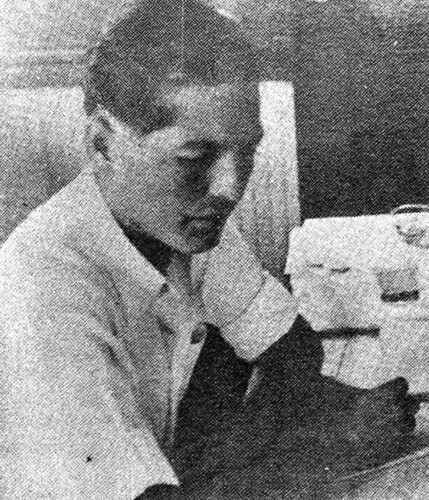Beatings, murder, beheadings
While remembrance of World War II atrocities against the CHamorus occur every year for the massacres at Fena in Sånta Rita-Sumai and Faha and Tinta in Merizo, as well as the Manenggon concentration camp, there were atrocities by Japanese soldiers against the CHamorus that took place on smaller scales in other areas.
The other atrocities also took place in the weeks that preceded the American invasion of Guam in July 1944, at places such as Ta’i (in Mangilao), Hagåtña and Yigo. They included the murder of Father Jesus Baza Duenas, his nephew and several other men at Ta’i; the killing of eleven men, women, and children in Hagåtña on 20 July; and the beheading of dozens of young CHamorus in early August who had carried war supplies to Yigo for the Japanese military.
In Ta’i, Judge Joaquin V.E. Manibusan witnessed the beheading of three CHamoru men by a Japanese taicho (head officer). Manibusan wrote about that day fifty years later.
Manibusan was the leader of a team of CHamorus assigned to dig several holes, which were used as graves for the three beheaded men, and he and his team members witnessed the executions along with several nurses. Several of his team members were later killed in Yigo, according to Manibusan, and one of the nurses—Mariquita Perez Howard—was soon after killed by the Japanese. Manibusan described several other occasions when Japanese officers who threatened him with their swords, in one instance wounding him and leaving a scar on his forehead.
Also in Ta’i, Father Duenas, known as an outspoken defender of the Catholic faith and of the CHamoru people, was tortured and executed by the Japanese only nine days before the return of American forces. Duenas was arrested by Japanese authorities in Inalåhan on 8 July 1944. He had often angered the Japanese by opposing their directives and was suspected of aiding American fugitive George Tweed and other American efforts. He was arrested along with his nephew, former Island Attorney Eduardo Duenas, and both men were tortured in Inalåhan and the Kempeitai headquarters in Agana Heights. On 12 July, they were beheaded in Ta’i along with Vicente Baza and Juan (Mali) Pangelinan, who had also helped Tweed.
In Hagåtña, on the night of 20 July, 11 CHamoru men, women and children who were accused of signaling US aircraft were bayoneted to death by the Japanese. Two teenagers escaped by faking death after being stabbed by bayonets.
Some of the largest massacres occurred in Yigo towards the end of the American invasion. As the American forces drove the Japanese northward, the Americans came across scenes of atrocities inflicted against CHamorus. On 8 August, a Marine patrol found 30 dead CHamorus around a Japanese truck north of Yigo village at Chagui’an. The next day, near the same area, another patrol came across another 21 bodies. These dead CHamorus were forced by the Japanese to carry ammunition and supplies to the north, and then were killed by the Japanese to prevent them from providing information to the Americans.
For further reading
Guam War Survivors. “Home.” Last modified 27 June 2021.
Howard, Chris Perez. Mariquita: A Guam Story. Hagåtña: PPh & Company, 1982.
Manibusan, Joaquin V.E. “In Tai, A Day of Terror and Tragedy.” War in the Pacific NHP: Liberation – Guam Remembers, last modified 17 March 2016.
Palomo, Tony. “A Man of Courage and Conviction.” In Liberation-Guam Remembers: A Golden Salute for the 50th Anniversary of the Liberation of Guam. Maite: Guam 50th Liberation Committee, 1994.
––– “A Time of Sorrow and Pain.” War in the Pacific National Historical Park, last modified 12 June 2014.
Rogers, Robert. Destiny’s Landfall: A History of Guam. Honolulu: University of Hawai’i Press, 1995.


